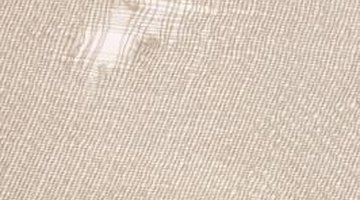How to Repair a Small Hole in Upholstery
Repairing small holes, such as cigarette burns or snags, in your furniture or car upholstery is usually a temporary fix unless you replace the entire section of fabric. Two repair methods involve adhesive and a patch of either fibers or fabric. Matching the upholstery fabric color as precisely as possible is the key to an undetectable repair. After you patch the hole in the upholstery fabric, save your excess fibers or fabric and adhesive in a plastic bag for easy retrieval in the future when the hole repair needs to be touched up.
Adhered Fiber Repair

-
Create fibers that can be used to fill the hole in the upholstery fabric of the sofa, chair or car seat. Use a razor to slice off a small handful of carpet fibers from an inconspicuous place in a vehicle, or use scissors to trim the fiber tops from velour fabric or from an inconspicuous upholstery location on the furniture.
-
Use a marker to color the foam or padding on the sofa, chair or car seat directly below the hole if there is no hole in the padding. Holes caused by cigarette burns sometimes extend into the padding below the fabric. If there is a hole in the padding beneath the fabric hole, the padding will need to be repaired as well.
-
Cut wool carpet padding into fine shreds with scissors. Place two or three drops of super strength glue into the hole.
-
Press the padding shreds into the hole. Don't overfill the hole. The shreds should be about ¼-inch away from the hole's edges.
-
Mix the padding shreds and adhesive quickly with a toothpick. Discard the toothpick.
-
Press the shredded padding and adhesive down into the hole with a screwdriver for about 10 seconds.
-
Add two drops of super-strength glue to the center of the hole on top of the previously added shredded padding.
-
Press the cut carpet, velour or furniture upholstery fibers into the glue on top of the padding shreds with the flat edge of the screwdriver. Add more glue if necessary. Avoid contact with the repaired hole on the sofa, chair or car seat for at least 24 hours to allow the adhesive and fibers to dry.
Adhered Fabric Patch Repair
-
Locate excess upholstery fabric beneath the sofa, chair or car seat, or find upholstery fabric that is identical to or closely resembles the damaged upholstery.
-
Measure the hole and cut a square of replacement fabric that is 1/8-inch longer and wider than the hole.
-
Patch any holes in the padding/foam beneath the upholstery fabric on the sofa, chair or car seat with padding shreds and the super-strong glue. If there is no hole in the padding/foam, color the foam/padding with a marker in the same shade as the upholstery fabric.
-
Insert the upholstery fabric patch into the hole in the sofa, chair or car seat. Tweezers are useful in poking the patch's edges beneath the hole's edges.
-
Use tweezers to pull back one edge of the upholstery fabric patch.
-
Squirt glue beneath the patch onto the cushion beneath.
-
Poke the fabric patch's edge back beneath the hole's edge with the tweezers.
-
Squirt glue under the edges of the upholstery fabric hole, being careful not to get glue on the visible side of the fabric patch.
-
Press the upholstery fabric hole's edges firmly down onto the patch beneath. Avoid contact with the repaired hole on the sofa, chair or car seat for at least 24 hours to allow the adhesive to dry.
References
Tips
- If the sofa or chair upholstery fabric is untextured and woven, such as cotton, the upholstery fabric should be patched via the adhered fabric patch method.
Warnings
- Use alcohol to remove super strength adhesive from your skin.
Writer Bio
Louise Harding holds a B.A. in English language arts and is a licensed teacher. Harding is a professional fiction writer. She is mother to four children, two adopted internationally, and has had small businesses involving sewing and crafting for children and the home. Harding's frugal domestic skills help readers save money around the home.
Photo Credits
- Hemera Technologies/AbleStock.com/Getty Images
More Articles



